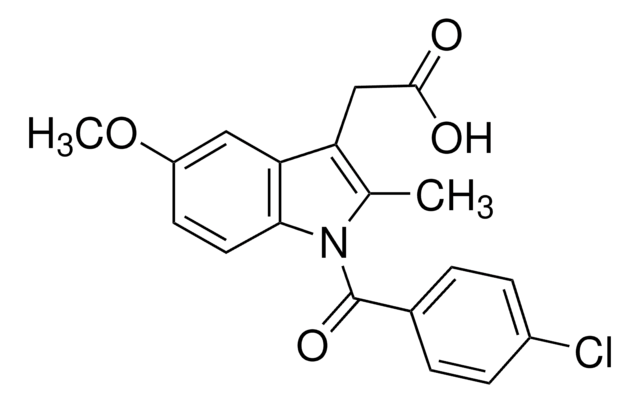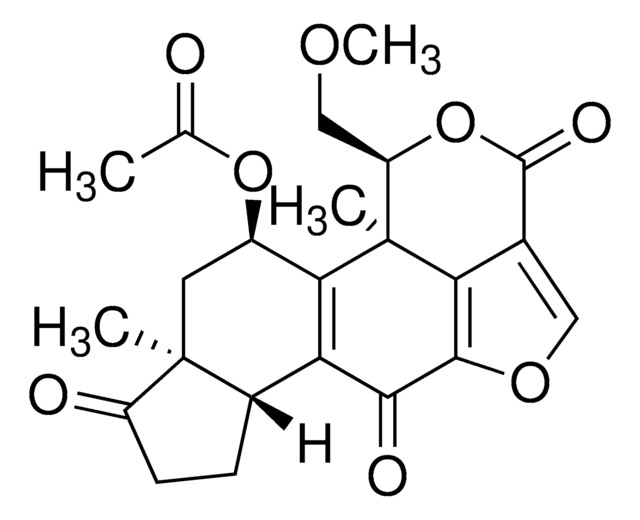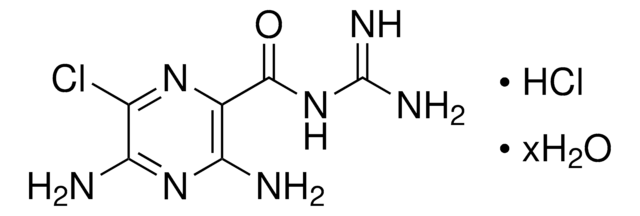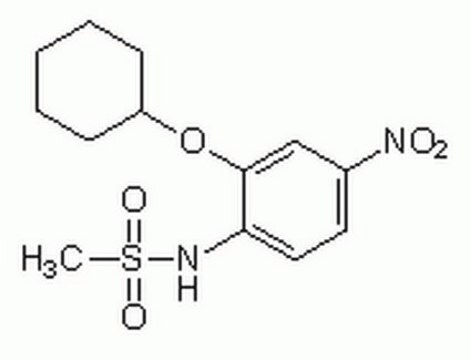B6309
(R)-Butaprost
≥98% (HPLC)
Synonym(s):
(1R,2R,3R)-3-Hydroxy-2-[(1E,4R)-4-hydroxy-4-(1-propylcyclobutyl)-1-butenyl]-5-oxo-cyclopentaneheptanoic acid methyl ester
About This Item
Recommended Products
Quality Level
assay
≥98% (HPLC)
form
oil
color
light yellow
solubility
DMSO: freely soluble
ethanol: freely soluble
originator
Bayer
storage temp.
−20°C
SMILES string
CCCC1(CCC1)[C@H](O)C\C=C\[C@H]2[C@H](O)CC(=O)[C@@H]2CCCCCCC(=O)OC
InChI
1S/C24H40O5/c1-3-14-24(15-9-16-24)22(27)12-8-11-19-18(20(25)17-21(19)26)10-6-4-5-7-13-23(28)29-2/h8,11,18-19,21-22,26-27H,3-7,9-10,12-17H2,1-2H3/b11-8+/t18-,19-,21-,22-/m1/s1
InChI key
XRISENIKJUKIHD-LHQZMKCDSA-N
Application
Biochem/physiol Actions
Features and Benefits
Storage Class
11 - Combustible Solids
wgk_germany
WGK 3
flash_point_f
Not applicable
flash_point_c
Not applicable
ppe
Eyeshields, Gloves, type N95 (US)
Choose from one of the most recent versions:
Already Own This Product?
Find documentation for the products that you have recently purchased in the Document Library.
Related Content
Discover Bioactive Small Molecules for Lipid Signaling Research
Our team of scientists has experience in all areas of research including Life Science, Material Science, Chemical Synthesis, Chromatography, Analytical and many others.
Contact Technical Service







